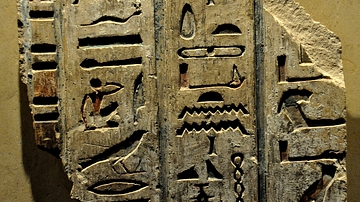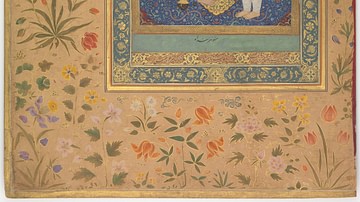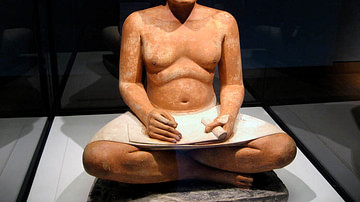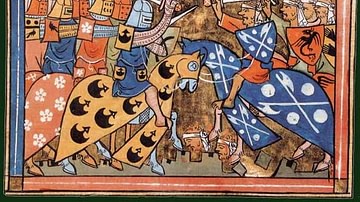Search
Did you mean: Vidar?
Summary 
Loading AI-generated summary based on World History Encyclopedia articles ...
Search Results

Definition
Ancient Egyptian Vizier
The vizier in ancient Egypt was the most powerful position after that of king. Known as the djat, tjat, or tjati in ancient Egyptian, a vizier was the equivalent of the modern-day prime minister of the nation who actually saw to the day-to-day...

Image
Vizier Hemiunu
A statue of Egyptian Vizier Hemiunu (c. 2570 BCE) who is credited as the architect of the Great Pyramid at Giza. From his tomb at Giza. (Roemer and Pelizaeusmuseum, Hildesheim, Germany)

Image
Vizier Kagemni
Polychrome relief of Kagemni in his own mastaba, Saqqara, Egypt. Kagemni was a vizier of pharaohs Djedkare Isesi and Unas (5th dynasty), and Teti (6th dynasty), 24th century BCE.

Image
Vizier Rekhmire Receiving Offerings
A depiction from the tomb of the vizier Rekhmire showing him and his mother receiving offerings. Rekhmire served under the pharaohs Thutmose III (1458-1425 BCE) and his son Amenhotep II (1425-1400 BCE). (Metropolitan Museum of Art, New York...

Image
Vizier Bakenrenef Inscription
Limestone fragment of an inscription from the tomb of vizier Bakenrenef (Bakenranef). From Saqqara (Sakkara), modern-day Egypt. Saite period, 26th Dynasty, circa 590 BCE. (State Museum of Egyptian Art, Munich, Germany).

Image
Jahangir and His Vizier, I'timad al-Daula
Jahangir and His Vizier, I'timad al-Daula, folio from the Shah Jahan Album, ink, opaque watercolor, and gold on paper by Manohar, India, c. 1615. Mughal emperor Jahangir (r. 1605-27) bestowed the title of l'timad al-Daula (meaning "reliance...

Definition
Ancient Egyptian Government
The government of ancient Egypt was a theocratic monarchy as the king ruled by a mandate from the gods, initially was seen as an intermediary between human beings and the divine, and was supposed to represent the gods' will through the laws...

Definition
Ancient Egyptian Law
Ancient Egyptian culture flourished through adherence to tradition and their legal system followed this same paradigm. Basic laws and legal proscriptions were in place in Egypt as early as the Predynastic Period (c. 6000- c. 3150 BCE) and...

Article
Social Structure in Ancient Egypt
The society of ancient Egypt was strictly divided into a hierarchy with the king at the top and then his vizier, the members of his court, priests and scribes, regional governors (eventually called 'nomarchs'), the generals of the military...

Article
Zengids & the Crusaders: Race for Egypt (1163-1169 CE)
In the aftermath of the failure of the Second Crusade (1147-1149 CE), which only managed to bring Damascus under Nur ad-Din's (sometimes also given as Nur al-Din, l. 1118-1174 CE) dominion, Egypt acquired top priority – both from a strategic...